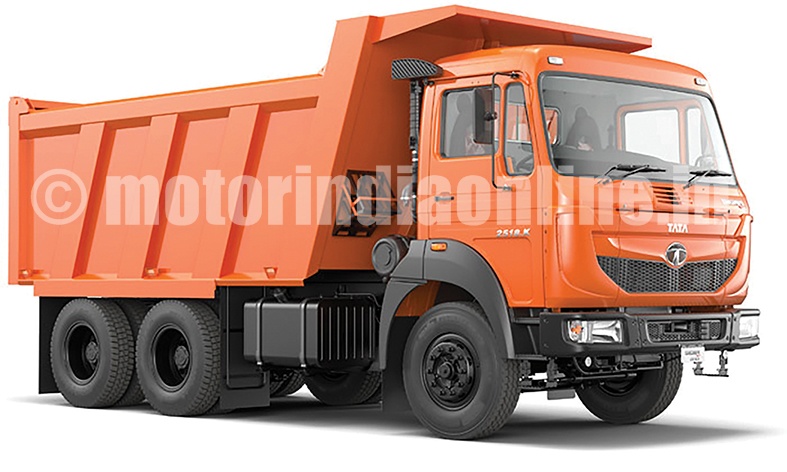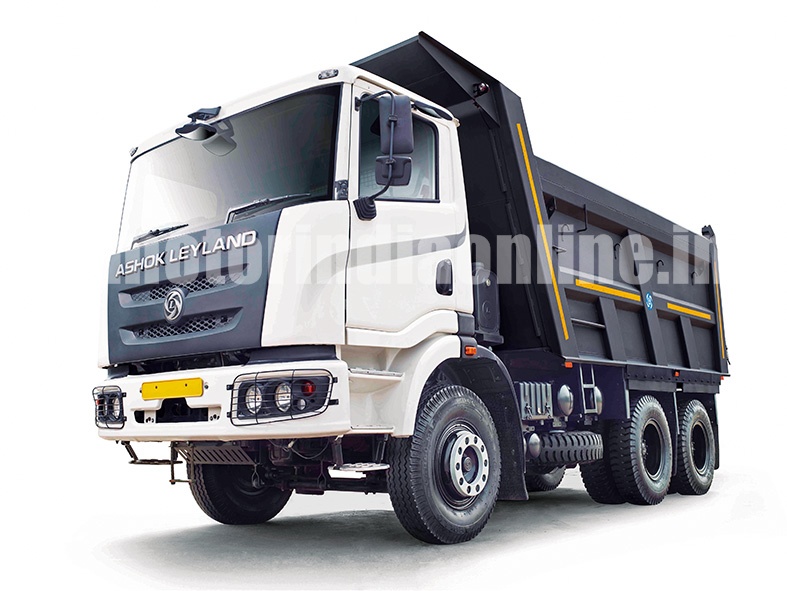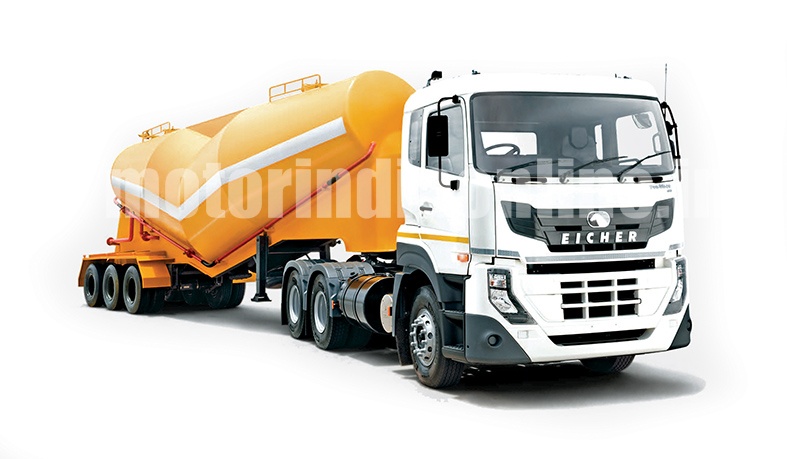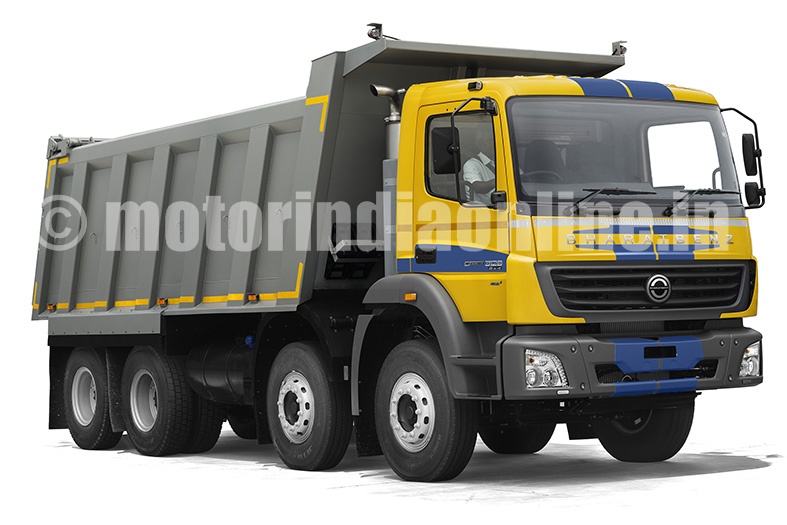“There is nothing permanent except change,” so goes the wisdom quote of Heraclitus, the Greek philosopher known for his doctrine of change being central to the universe. This profound thought offers incisive life reflections especially for the current fast paced society that has little time to pause, observe and adapt. Yes, many of the changes whiz past unnoticed, some get the peripheral attention and only a few make the people stop and ponder over the implications. Such of those disruptive changes are brought about by impact factors that effect a paradigm shift in the way the plot evolves down the path ahead; and such scenarios as above are likely to unfold in the auto domain in the current year and in the time to come. Tectonic shifts are likely to come in a hurrying sequence and the trucking segment in particular likely to face more of it within a short span of time thro’ causative factors in the form of regulations and norms like BS-IV, GST, AC Cabin, Scrapping, etc. – apart from of course the increasing role of technology making a significant impact in every facet of the CV space like never before.
How well is the trucking industry bracing itself for all these inflection points and are they in battle-ready state to meet the gargantuan challenges ahead? To know about the same and the need for a swift adaptation to the new environment, we contacted the OEMs and some of the domain players. Their observations and insights bring out the magnitude of the likely business upheavals, ground realities, growth pangs and opportunities thereof to the fore – read on for the excerpts of their absorbing viewpoints.
Beginning of a new era
Right in the front of the change pipeline are the BS-IV & AC cabin regulations; and while the debate is raging on vis-à-vis the feasibility and difficulties of AC cabin norm getting implemented, BS-IV is a reality from April 1, 2017. As in any major reform, the confusions and doubts arose regarding the sale and registration of BS-III after the deadline. Inventory of all categories of unsold vehicles cited at about Rs. 12,000 crores became the bone of contention albeit the commitment of OEMs manufacturing the vehicles conforming to BS-IV and oil companies also ready to meet the pan India needs. The matter was settled by the honourable Supreme Court of India after examining the pros and cons of various presentations and green flag at last shown for sale and registration of only BS-IV vehicles from April 1, 2017; and allowing also to register such of those vehicles bought before the above date but firmly tuning down the case for time extension in liquidating the piled up inventory after April 1.
Mr. Nalin Mehta, Chief Executive Officer, Mahindra Truck and Bus Division (MTBD), and Managing Director, Mahindra Truck and Bus Ltd. (MTBL), says: “Implementation of BS-IV has been a challenge from day 1. The challenge involved was on both technological front as well as commercial front. BS-IV Technology called for a major leap in terms of approach to be taken (EGR or SCR), & meeting the testing standards. In 2010, all the engines operational were on purely mechanical meeting BS-III standards. It was evident that for BS-IV electronics has to replace age old mechanical engines. The challenge was to keep these big changes as simple as possible for the customers & mainly the local service shops to decipher & accept.”
He adds: “Commercially the challenge was inconsistent demand. Few designated cities had imposed BS-IV mandatory. So only vehicles with registration in these cities or Government bodies were looking for BS-IV vehicle. In such scenario, BS-IV vehicles had staggered demand & hence the overall cost to customer was high. Indian market is highly sensitive to fuel efficiency. Commercially next challenge was to offer attractive FE to compensate for increased cost of BS-IV technology. The entire journey from 2010 till date dotted with lots of learning for OEMs & has given our customers substantial time to accept the technology, the accompanying challenges with it & its cost implications. We started our journey with BS-IV in mind & our implementation has been smooth. We are ready with our offerings & have already seeded substantial number of BS-IV vehicles to given us unique insights in 100% roll out/implementation from April 1, 2017. Our experience on LCV platform has been similar. We have been offering BS-IV technology on LCV Load & Bus platform from 2010 onwards. All OEMs are ready with BS-IV compliant vehicles, as this has been applicable in all major cities for a while now. We have adapted the SCR system in our HCV trucks to meet the BS-IV emission norms.”
Bharat Benz has been positioning itself as the technology leader in the competitive CV space and with the new regulations kicking in, highlighting the specs of the new generation trucks more than meeting the stipulated norms. “The BS-IV transition is just one of the latest examples how BharatBenz has continuously been advocating for available technologies to be rolled out in the Indian market in order to make trucks cleaner and safer. Right with its market launch, the brand had offered crash-tested steel cabins which fulfil global standards and introduced Anti-Lock Braking System (ABS) as standard before it became mandatory, while factory-fitted Air Conditioning has been available as an optional feature from day one. The decision of the Supreme Court reassures us in our belief that industry interests must go together with the interests of the society at large. The BS-IV standard will bring much needed improvements in terms of air quality, to the benefit of the people and the environment,” asserts Mr. Erich Nesselhauf, Managing Director and CEO, Daimler India Commercial Vehicles.
Biggest tax reform
GST in the pipeline is undoubtedly the biggest tax reform since independence and its draft has gone thro’ multiple changes over a long stretch of time interspersed with debates, discussions and scrutinies before being passed unanimously by both the houses of parliament during middle of last year; and with the recent approval by the GST council, the stage is set for implementation from July 1, 2017. This single tax regulation is expected to give GDP growth rate an upward spike of about 1.5% and provide momentum to all sectors of economy. Manufacturing and logistics segments are expected to benefit majorly and with the eagerly anticipated seamless movement of trucks devoid of the check post hurdles, logistics sector is expected to take off to the next orbit.
Mr. Deepak Garg, CEO & Founder, Rivigo Services Pvt. Ltd., states: “One of the important elements of the move will be the ease in designing and organising the supply chain free of tax worries. This means bringing in higher efficiency level in the supply chain thro’ various measures; firms can consolidate the warehouses and have fewer no. of larger warehouses. Such measures should lead to lowering of logistics costs and consequently the prices of the end products to the customer. Also the move will lead to a shift towards pull based supply chain and this will demand faster and efficient services. Taking our case, Rivigo having an organised infrastructure in place can meet such demanding requirements and we see growth opportunities for us in this move.”
Old is no more gold
To give a fillip to the environmental protection, the scrapping of old vehicles is on the anvil; and when it come thro’, first on the chopping block in all likelihood will be 15 year old trucks. It is another of the major reforms that is likely to be game changer for all the players in the segment. If the old trucks and buses are likely to be scrapped to control the pollution menace, it can give a boost for the OEMs and other segment players with the shoot up of the replacement market apart from the several secondary benefits – like the genesis of organised sector recycling industry, scrap supply to the secondary steel industries, direct/indirect employment generation, reduction of scrap imports and savings in the valuable forex outflows, etc.
Against the cultural ethos of the country where old has always been considered gold, the scrapping reform can never be pushed thro’ without some attractive incentive schemes for the vehicle owner. In this regard the policy needs to examine the ‘cash for clunkers’ scheme introduced in Europe and the US with great success to encourage the old vehicle owners to opt for an exchange. The Government is examining various schemes including providing tradable certificates against the scrapped vehicle. The move has been welcomed by one and all and the OEMs and other domain players only wish to have a clear road map to be laid out by the Government so that they can ramp up their operations accordingly to meet the likely demand surge.
Leveraging technology
Technology adoption in the automotive domain has been at an impressive pace and introduction like ABS, airbags, collision warning systems, AMT, hybridisation, telematics, IoT, radialisation-alloy wheels, etc., have been making a significant difference; and will this impressive run continue to gather momentum during this year and in the path ahead?
Mr. GV Rao, Director – Product, Brand and Marketing, Volvo Trucks India, replies: “Out of the above mentioned technology features, I see Telematics, AMT and radialisation gaining lots of traction from the market in the near future. ABS has already become legal requirement for all the trucks. With customers growing bigger in their business and taking larger numbers of trucks in fleet, the demand for fleet management service is going to increase. The telematics has enormous advantage in improving the fleet efficiency. By remotely knowing about the location of your truck, tracking its performance like engine hours, mileage, fuel efficiency, etc., tracking driver’s performance, etc., customer can easily control their operation and work to improve its efficiency.”
He continues: “Similarly, with many benefits that AMT carries, in terms of driver comfort, optimum fuel efficiency, etc., it will also start gaining demand for selected segments. Volvo’s telematics solution named Dynafleet and automated transmission called I-Shift, are big steps towards providing the customer all they want. We at Volvo Trucks, have fully switched over from Manual transmission to I-Shift transmission for majority of our trucks including our flagship model FMX 8×4 since September 2016 and have received a very positive response from our customers.”
Against the unfolding business transitions and new dispositions, players are expected to respond with a proactive and innovative approach, catch the growth curve and forge a new platform for their operations; and with such a happening, the texture of the trucking segment will be definitely looking very different in the near future. The feedback from the sector specialists and associated organisations indicate that exciting times are ahead in the terrain and the opportunities likely to open out in a big way like never before. Are we headed for the Golden era of trucking segment in the years ahead? We will in all probability hear a vociferous ‘aye’ from the players actively preparing for this exciting phase and shaping up the future of the trucking industry in the surface transportation domain.



